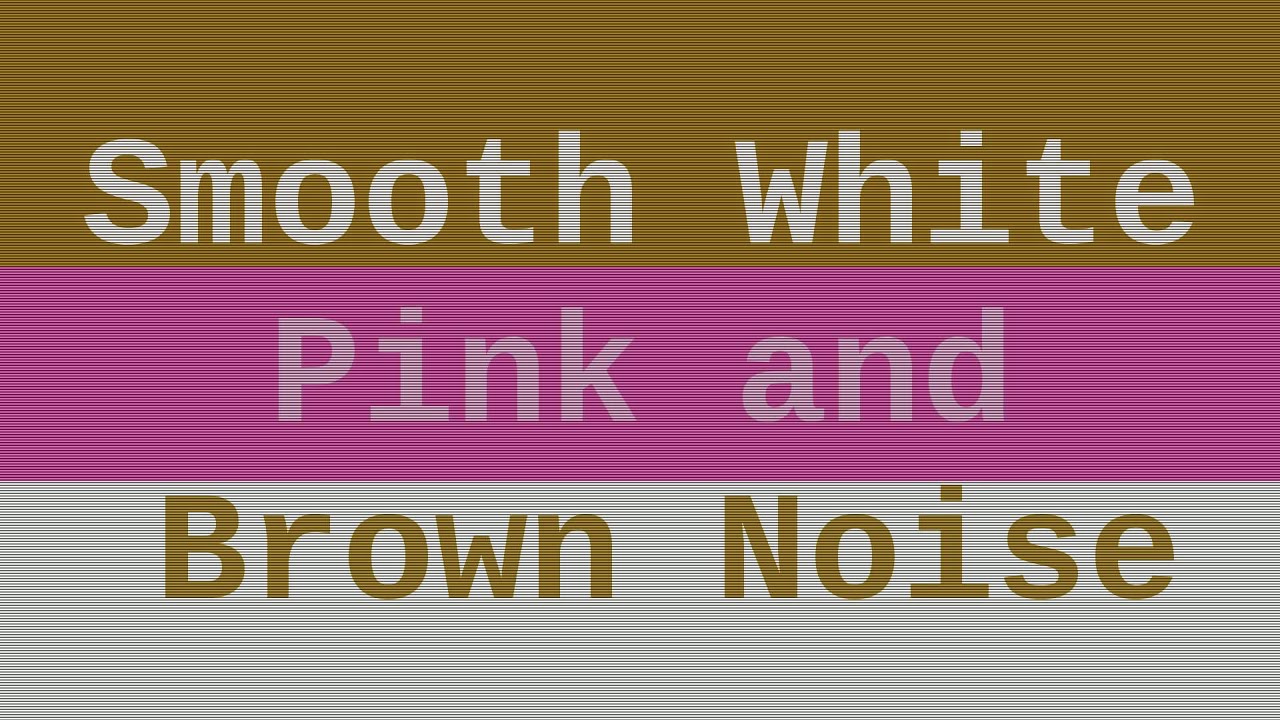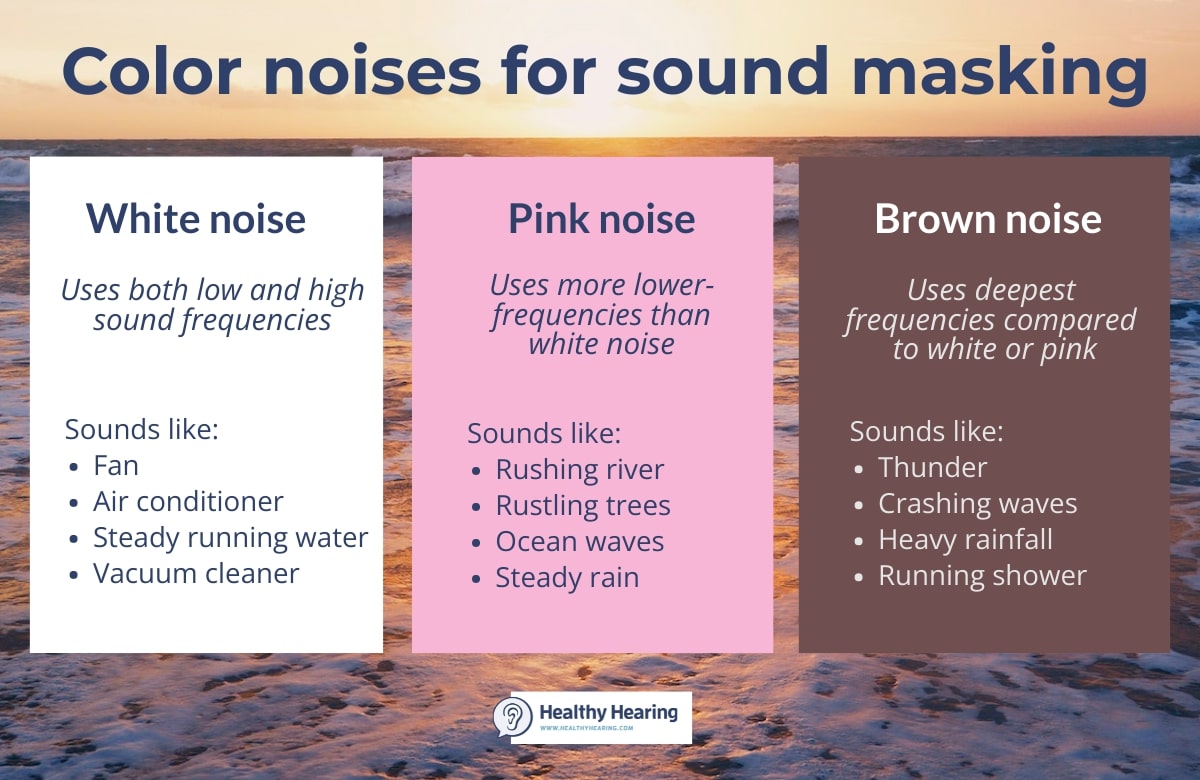
by Matt Weik, BS, CSCS, CPT, CSN
You’ve heard of white noise, right? Well, how about brown noise? Not as common, right?
Let’s call a spade a spade and just say that the world is filled with noise pollution and distractions, and it is not surprising that people have started seeking different types of sounds to boost their productivity.
There are different types of sounds that you may have heard of. White noise, like the sound of a fan or air conditioner, is familiar, but it’s just one type of ambient noise. There are many other “colors” of noise, each with its own unique characteristics based on sound wave patterns.
These colors cover a range of frequencies that we can hear, typically from 20 to 20,000 hertz.
Brown noise, for instance, has recently gained significant popularity. This is largely due to ongoing research and the widespread sharing of personal experiences on social media.
In this article, we will dive deeper into brown noise and unpack its many benefits you can experience through its use.
Disclaimer: This article is for informational purposes only and is not meant to treat or diagnose any condition.
What is Brown Noise?
There’s a new sound in town, and it’s making waves in the world of soundscaping. Brown noise is emerging as a powerful alternative to white noise, particularly for those seeking better sleep and relaxation.
Unlike white noise, which can be harsh and high-pitched (yet somehow allows me to get more done without distractions), brown noise has a deeper and more natural tone. It generates a gentle, low-frequency rumble that effectively masks higher-pitched sounds, creating a tranquil and focused atmosphere.
Think of it as a soothing lullaby for adults without the nursery rhymes.
Brown noise, also known as Brownian noise or red noise, gets its name from the phenomenon of Brownian motion discovered by botanist Robert Brown.
This type of noise is characterized by its low-frequency sound, resembling the gentle randomness observed in Brownian motion. Meanwhile, “red noise” draws its name from the light analogy, reflecting its dominance in longer wavelengths similar to the red end of the visible spectrum.
Research revealed that one in five British people (23%) incorporates brown noise into their bedtime rituals at least once a week. Interestingly, men (24%) seem to embrace brown noise more frequently than women (22%) as part of their weekly routine.
Examples of Brown Noise
Brown noise, often linked to the soothing sounds of nature, can be compared to familiar sounds:
- Gentle rumble of the ocean
- Heavy rain
- Rumbling of a waterfall
- Distant thunder
These examples capture the deep, calming essence of brown noise.

Benefits of Brown Noise
Here are some of the benefits of brown noise that you should be aware of when determining if you want to try using it or not.
1. It can improve sleep
Recent findings published show that brown noise might trigger improved sleep patterns. It suggests that exposure to brown noise could expedite the onset of sleep in comparison to white noise.
Also, brown noise has been linked to improved deep sleep and slow wave sleep phases, which are crucial for memory consolidation and learning processes.
In addition to that, the research indicates that brown noise may contribute to extending the duration of sleep.
2. Improves relaxation
Brown noise, similar to white and pink noise, offers potential benefits for relaxation and concentration. Its steady, gentle hum can help quiet the mind and help tune out distracting thoughts. Some find it to be a soothing backdrop for daily life.
While no direct evidence links brown noise to improved digestion, its calming effects may indirectly reduce stress and muscle tension, possibly offering comfort in bathroom settings.
It’s essential to note that brown noise differs from the speculative “brown note,” claimed to induce bowel movements.
3. It helps you to focus
When aiming to concentrate on tasks amid distractions, like in bustling environments or while studying, brown noise offers a solution.
Unlike white noise, which can be too harsh, brown noise creates a soothing backdrop, helping focus without overwhelming external sounds. This is especially beneficial for individuals with attention deficit disorders like ADHD, as it reduces distractions and improves concentration.
Studies support brown noise’s efficacy in improving focus and productivity, making it a valuable tool for maintaining attention and finishing tasks efficiently.
4. Tinnitus relief
For those who struggle with tinnitus, a condition that causes persistent buzzing or ringing in the ears, brown noise offers a respite. It masks the unwanted noise and provides temporary relief, making it easier to focus on other activities and sounds.
Imagine a serene room with the gentle hum of a fan in the backdrop. This is very similar to the effect of brown noise, which basically creates a soothing ambiance, masking the constant ringing of tinnitus.
Moreover, studies suggest brown noise’s efficacy extends to hyperacusis, a condition that increases sensitivity to sound by reducing overall environmental noise and discomfort.